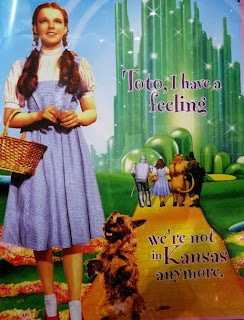"I brought you something." She reached into her bag, pulled out two small,
plastic bottles.
zamzam water
Imam ibn al-Qayyim al-Jawziyyah, may Allah have mercy on him, said, "Zamzam water is the best and noblest of all waters, the highest in status, the dearest to people, the most precious and valuable to them. It was dug by Jibril and is the water with which Allah quenched the thirst of Isma'il."
The Story of Zamzam
The story of Abraham, Sara, Hajar and Ishmael appears in the holy books of many faiths. This is the Koranic version, as it was shared with me:
Abraham's wife Sara was old and couldn't have children so Abraham took a
second wife. Her name was Hajar. When Hajar's baby Ishmael was born, Sara
became jealous. The conflict created an unpleasant home environment. Abraham
asked Allah what to do.
Allah told Abraham to take Hajar and Ishmael into the desert and leave them
in an destitute area between two mountains called Al-Safaa and Al-Marwaa.
Abraham took his wife and baby to the sand and windblown place. He gave
Hajar a few days' worth of food and water and walked away.
Hajar followed her husband, calling out, "Why are you leaving us here?"
Abraham didn't answer.
Hajar said, "Did Allah tell you to do this?"
"Yes," said Abraham.
"Then it's okay," replied Hajar. "Allah will take care of us." She smiled at
the baby in her arms. "Allah knows best."
When the food and water were gone, Hajar's milk dried up. Ishmael cried.
Knowing Allah would take care of them, Hajar ran from Al-Safaa to Al-Marwaa
and back, pausing at the top of each rocky dune to search the desert for
signs of food, water or a passing tribe. Once, twice…seven times she ran
over the desert and up each mountain. Always stopping to check on Ishmael
where he lay in the sandy space between.
Baby Ishmael became weak. He stopped crying. He began to die.
The seventh time Hajar stopped to check on Ishmael he was weaker than ever.
But this time something was different. Beneath his little foot, there was a
furrow in the sand. Water poured from the spot.
"…she heard a voice, and she said to that strange voice, 'Help us if you can
offer any help.' It was Gabriel (who had made the voice). Gabriel hit the
earth with his heel like this (Ibn 'Abbaas hit the earth with his heel to
illustrate it), and so the water gushed out."
"Zoom Zoom!" said Hajar, a word which meant in her language "to stop" or "to
collect something precious." She reached forward with her arms and made a
well from mud.
"…the Prophet said: ...May Allaah bestow his mercy upon her (Hagar, the
mother of Ismaa'eel), had she let go (of the water of Zamzam) it would have
become a spring (rather than a well) whose water shall never dry." [Ahmad]
With the water, Hajar's milk supply returned. She nursed Ishmael and he
grew.
An ancient Bedouin tribe heard about the well, visited Hajar and asked to
share the precious liquid. She agreed to share the water in exchange for
food. "But you have no right to own the water," she said. They agreed.
A community sprung up around the well.
The community became a city.
Today this city is the Muslim holy place, Mecca.
When you drink its water you should
face the direction of the Qiblah,
remember Allah,
drink it in three breaths,
drink as much as you can,
and praise and thank Allah when you finish drinking.
Today, Zamzam Well is moved below ground to facilitate modern distribution
through pipes, hoses and fountains for the millions of faithful, grateful
pilgrims who visit Mecca every year. Each Muslim circles the Kaaba seven
times in honor of Hajar's struggle. They drink, wash, cleanse in the water
and may collect it in containers to take away to places all around the
world.
Zamzam water is pure, never going bad, always nourishing, filling,
sustaining, life giving. Just like it was in the beginning.
"You must say a prayer when you drink," said my friend. "And - if you
believe - your prayer will come true."
About Zamzam
- may only be obtained in Mecca, Saudi Arabia
- free, pilgrims may collect it in containers and take it home
- the well is 35 meters deep and topped by a dome
- the well is located approximately 20 meters from the Kaaba
- satisfies both hunger and thirst
- high in calcium, magnesium salts, fluoride and other minerals
- heals the sick
- does not go bad
- the water is not chemically treated or chlorinated
- there is no unwanted biological growth or algae in the well
- no break in its flow; the more that's consumed the more there seems to be
- say a prayer as you drink, and, if you believe, whatever you ask will come true
Drink. Pray. Believe.
"Zamzam water is what one intends to drink for. When one drinks it to be
healed, Allaah heals him; when one drinks it be full, Allaah makes him full;
and when one drinks it to quench his thirst, Allaah quenches it." [Ahmad and
Ibn Maajah]

























